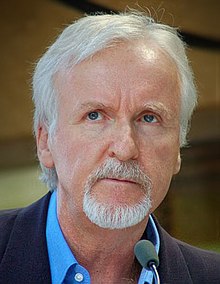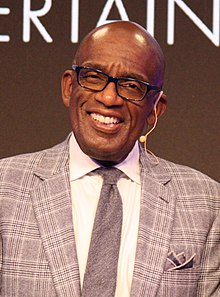Jobs that until now offered generous retiree health care benefits are doing an about-face to save money.
Workers are taking on more and more of the costs of being retired as employers shift the risk away from corporations.
"Employer-sponsored retiree health coverage once played a key role in supplementing Medicare," say Tricia Neuman and Anthony Damico of the Kaiser Family Foundation. "Any way you slice it, this coverage is eroding.”
In 1988, 66 percent of large firms that offered health coverage also provided retiree health plans. By 2015, that number had shrunk to a mere 23 percent.
 |
| The disappearing benefit: Employers have been cutting out retiree health coverage. (Kaiser Family Foundation) |
Health Savings Accounts to the RescueIf you qualify, there is one way to counter the erosion of medical benefits. Health Savings Accounts (HSAs) are available to Americans not yet on Medicare who are covered by high-deductible health insurance plans. You fund an HSA with your own money, but it’s tax-free going in and tax-free coming out, as long as you use it for an eligible health-related expense. The annual limit for a single adult is currently $3,500, or $7,000 for a family, with a $1,000 catch-up contribution available for those 55 and older. The money is held by an administrator, many of which offer low-cost investment options such as market index funds. You can spend your HSA on deductibles, premiums, copayments, medical equipment and the like. Or, save your receipts to be refunded (or not) later, and let your (tax-free) account grow over time. Get HSA basics here, or go to the IRS for complete HSA rules. Check here for some of the best HSA fund administrators and general advice. Oh, and if you don’t have the extra cash to put into an HSA, but you qualify and have a traditional individual retirement account (IRA), use the one-time rollover option to fund your HSA. Why? You’ve just sheltered that money from tax liability when it’s withdrawn in exchange for agreeing to use it for medical costs. And health care expenses, like death and taxes, are a certainty. |
"The drop in retiree health coverage has important implications for retiring boomers who are approaching their Medicare years with a different set of insurance needs and choices than their parents' generation," the Kaiser analysts write.
The Medicare Part A deductible for hospital services is $1,364 for 2019, and you’ll pay $341 of coinsurance for every day over 60 that you’re in the hospital. Medicare Part B, for physician and other outpatient services, has a $185 deductible, and you must pay for 20 percent of services.
Those numbers may not faze retirees with large nest eggs, but for those who haven’t feathered their nest, chronic illness or a single acute medical event can create a financial crisis.
Kaiser’s employer survey revealed that the drop in employer-sponsored health care has come at the expense of those least able to bear it. Among the largest employers (5,000 or more employees), 42 percent continue to offer retiree health benefits. This number drops to 20 percent for companies with 200 to 999 workers. The highest rates of coverage were in state and local government (73 percent), communications and utility firms (62 percent) and finance (49 percent). The former two are highly unionized. But if you’re a low-wage earner in retail (12 percent covered) or agriculture and construction (15 percent covered), it’s much less likely you’ll have employee health care benefits in retirement.
Ripple Effects
It’s bad enough for the retirees themselves, but these reductions in benefits have far-reaching consequences. Left with holes in their coverage, many retirees opt for Medigap policies and pay the monthly premiums. This drives up costs for the federal government, in turn. People with Medigap policies tend to use more health care services because trips to the doctor or clinic are fully covered. Today, 1 out of every 4 Medicare enrollees has a Medigap policy.
Legislated limits on Medigap plans may well follow. A broad consortium of policymakers from right, left and center ideologies have advocated to prohibit Medigap plans from covering deductibles. If this happens, an increasing number of retirees may look to Medicare Advantage for relief. These plans offer smaller provider networks and caps on annual spending. But they’re also pricier for the government.
The trend in reduced retiree benefits is not likely to reverse. However, it’s important to keep in mind that Medicare is not a panacea and health care is not solved once Americans turn 65. If anything, the growing number of older adults will drive changes in health care delivery in the near future.
When States Default
Almost a quarter of Americans are not covered by Social Security. Instead, they depend on pension funds, many of which include health care benefits. But these benefits are eroding.
It’s no secret that many public pension plans are in trouble. During the Great Recession, many states and local governments reduced employer contributions, effectively borrowing from those funds.
The problem varies in intensity across the states. By the end of 2015, pension funds in Kentucky, New Jersey and Illinois had 40 percent or less of the assets they required to meet their obligations. Puerto Rico was even worse: the U.S. territory was 1.57 percent funded. The total gap for post-employment benefits in all 50 states is near $600 billion, according to government data gathered by Eaton Vance Corp.
Some states are acting preemptively and denying health care coverage to new employees. This can take hiring from difficult to near impossible. In Butner, North Carolina, new recruits for correctional facilities jobs no longer get health care benefits in retirement. Roughly 30 percent of the county’s correctional officer positions were unfilled in May 2019, according to Charles Johnson, corrections official. The entire state will end retiree health care for new hires in 2021.
Kansas already tells retirees to pay the full cost of health care, sending monthly premiums as high as $1,000. Three-quarters of enrolled retirees have since dropped out, according to Duane Goossen, the state’s acting secretary of administration. But the plan worked. Liability dropped from $6.1 trillion down to $508,000.
North Carolina Treasurer Dale Folwell expects eliminating health care benefits for future retirees will strengthen the state’s finances. With $28.5 billion in unfunded retiree health care liability, North Carolina was desperate. “It’s not emotional and it’s not political,” says Folwell. “It’s mathematical.”
Click below for the other articles in the August 2019 Senior Spirit
Sources:
www.wsj.com/articles/as-retiree-health-care-bills-mount-some-states-have-a-solution-stop-paying-11556703001
www.latimes.com/business/hiltzik/la-fi-hiltzik-retiree-health-insurance-20160511-snap-story.html
https://money.cnn.com/2016/06/20/pf/workplace-benefits/index.html
https://money.cnn.com/2016/06/20/pf/workplace-benefits/index.html
www.medicare.gov/your-medicare-costs/medicare-costs-at-a-glance
www.clevelandfed.org/newsroom-and-events/publications/economic-commentary/2017-economic-commentaries/ec-201716-pensions-when-states-default.aspx
www.msn.com/en-us/money/retirement/as-retiree-health-care-bills-mount-some-states-have-a-solution-stop-paying/ar-AAALpvb
www.betterment.com/resources/truth-about-hsas-and-retirement/
www.latimes.com/business/hiltzik/la-fi-hiltzik-retiree-health-insurance-20160511-snap-story.html
https://money.cnn.com/2016/06/20/pf/workplace-benefits/index.html
https://money.cnn.com/2016/06/20/pf/workplace-benefits/index.html
www.medicare.gov/your-medicare-costs/medicare-costs-at-a-glance
www.clevelandfed.org/newsroom-and-events/publications/economic-commentary/2017-economic-commentaries/ec-201716-pensions-when-states-default.aspx
www.msn.com/en-us/money/retirement/as-retiree-health-care-bills-mount-some-states-have-a-solution-stop-paying/ar-AAALpvb
www.betterment.com/resources/truth-about-hsas-and-retirement/
www.csa.us
Print Friendly Version









